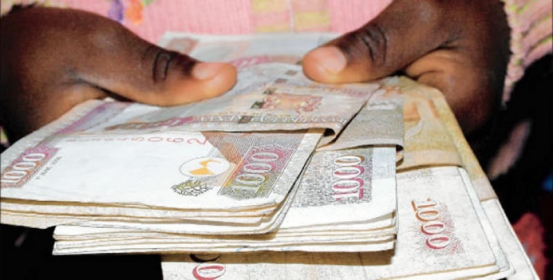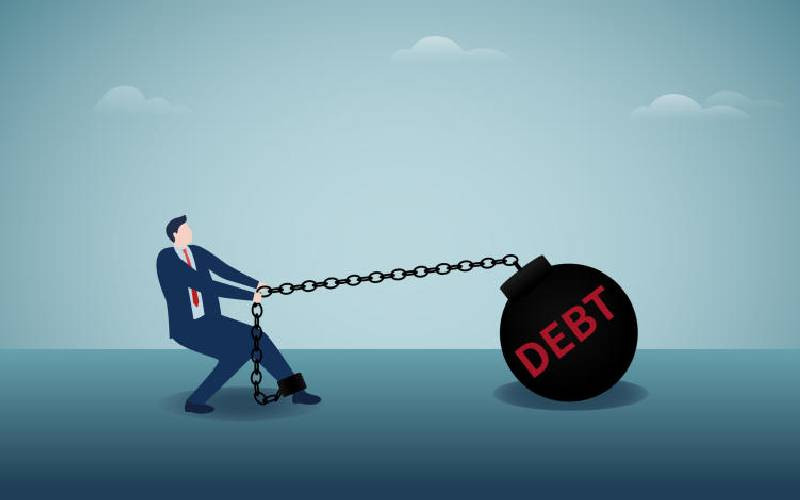
The Government has borrowed six times more money than you have, an indicator of the huge debt taken up by the State in recent years.
A new study has found that while private debt per household stood at Sh65,000, public debt was at a high of Sh400,000.
By 2016, the period that the report looked at, public debt per household had risen 102 per cent from 2013 levels.
The private sector credit report by asset management firm, ICEA Lion, paints a grim picture of the Government’s increasing appetite for debt, which is likely to put pressure on Kenyan households with increased taxes.
Already, the Government has introduced a myriad of taxes to finance its huge budget, particularly after space to chalk up more debt reduced.
“In Kenya, after household private debt rising steeply by 50 per cent between 2013 and 2016, it flattened at approximately Sh65,000 since the rate cap was introduced in September 2016,” said ICEA Lion Asset Management Head of Research Judd Murigi.
Crowded out
However, the report also shows how the Government’s active involvement in the domestic credit market might have crowded out the private sector, including private households, with banks preferring to lend to a less risky Government than the private sector.
As at June 2018, credit to private households was at Sh398 billion, a 2.8 per cent increase from Sh387 billion in June 2017.
In the same period public debt rose 14 per cent to Sh5 trillion compared to Sh4.4 trillion in the same period in 2017.
The World Bank has faulted the National Treasury for poor management of debt.
Treasury has come under pressure for the manner in which it has incurred debt, with the World Bank in a new report noting that Kenya’s score on the sub-cluster of debt management declined by 0.5 to 4.0 last year from 4.5 in 2016.
The global lender cited weak capacity of Treasury’s Debt Management Office and failure to implement strategy. It said without adequate staff and clear leadership and accountability, the office faced challenges in carrying out its work.
Treasury, according to the bank, has been dragging its feet, with the implementation of reforms to strengthen the debt strategy pending for several years.
Stay informed. Subscribe to our newsletter
However, Treasury recently announced that it was recruiting debt management experts who would provide guidance in determining borrowing ceilings for national and county governments.
The study by ICEA Lion also found that small enterprises might have been left out of the credit market as has been portrayed by the Central Bank of Kenya and the International Monetary Fund following the decision by MPs to cap interest rates charged by banks.
It found that much of the private sector credit growth in manufacturing and trade - where SMEs are highly represented - was not affected by the Banking Amendment Act, 2016.
The law put a ceiling on the interest rate charged by banks at no more than four per cent of the Central Bank Rate, currently at nine per cent.
“This indicates that lenders in the region have a higher credit appetite for these segments... indicating financiers’ willingness to extend credit to this vital driver of regional economies,” said Mr Murigi.
Credit flows to trade and manufacturing, noted the report, had remained fairly constant at Sh40 billion to Sh50 billion in 20 months before and after the cap.
“In contrast, credit flows to real estate and private households have halved since the introduction of the rate cap, while the transport and communications sector has seen a Sh35 billion decline in private sector credit flows since September 2016,” said Murigi.
A 2016 survey found micro, small and medium-sized enterprises in Kenya to have a high concentration in the service sector, with most operating in wholesale and retail trade, and repair of motor vehicles and motorcycles.
“Wholesale and retail trade, repair of motor vehicles and motorcycles accounted for more than half of licensed (57.1 per cent) and unlicensed (62.9 per cent) businesses,” read the report.
Other sectors with many MSMEs were accommodation and food service activities.
Agriculture, the country’s largest economic sector, only received five to seven per cent of private sector credit over the past two years.
 The Standard Group Plc is a
multi-media organization with investments in media platforms spanning newspaper
print operations, television, radio broadcasting, digital and online services. The
Standard Group is recognized as a leading multi-media house in Kenya with a key
influence in matters of national and international interest.
The Standard Group Plc is a
multi-media organization with investments in media platforms spanning newspaper
print operations, television, radio broadcasting, digital and online services. The
Standard Group is recognized as a leading multi-media house in Kenya with a key
influence in matters of national and international interest.
 The Standard Group Plc is a
multi-media organization with investments in media platforms spanning newspaper
print operations, television, radio broadcasting, digital and online services. The
Standard Group is recognized as a leading multi-media house in Kenya with a key
influence in matters of national and international interest.
The Standard Group Plc is a
multi-media organization with investments in media platforms spanning newspaper
print operations, television, radio broadcasting, digital and online services. The
Standard Group is recognized as a leading multi-media house in Kenya with a key
influence in matters of national and international interest.









